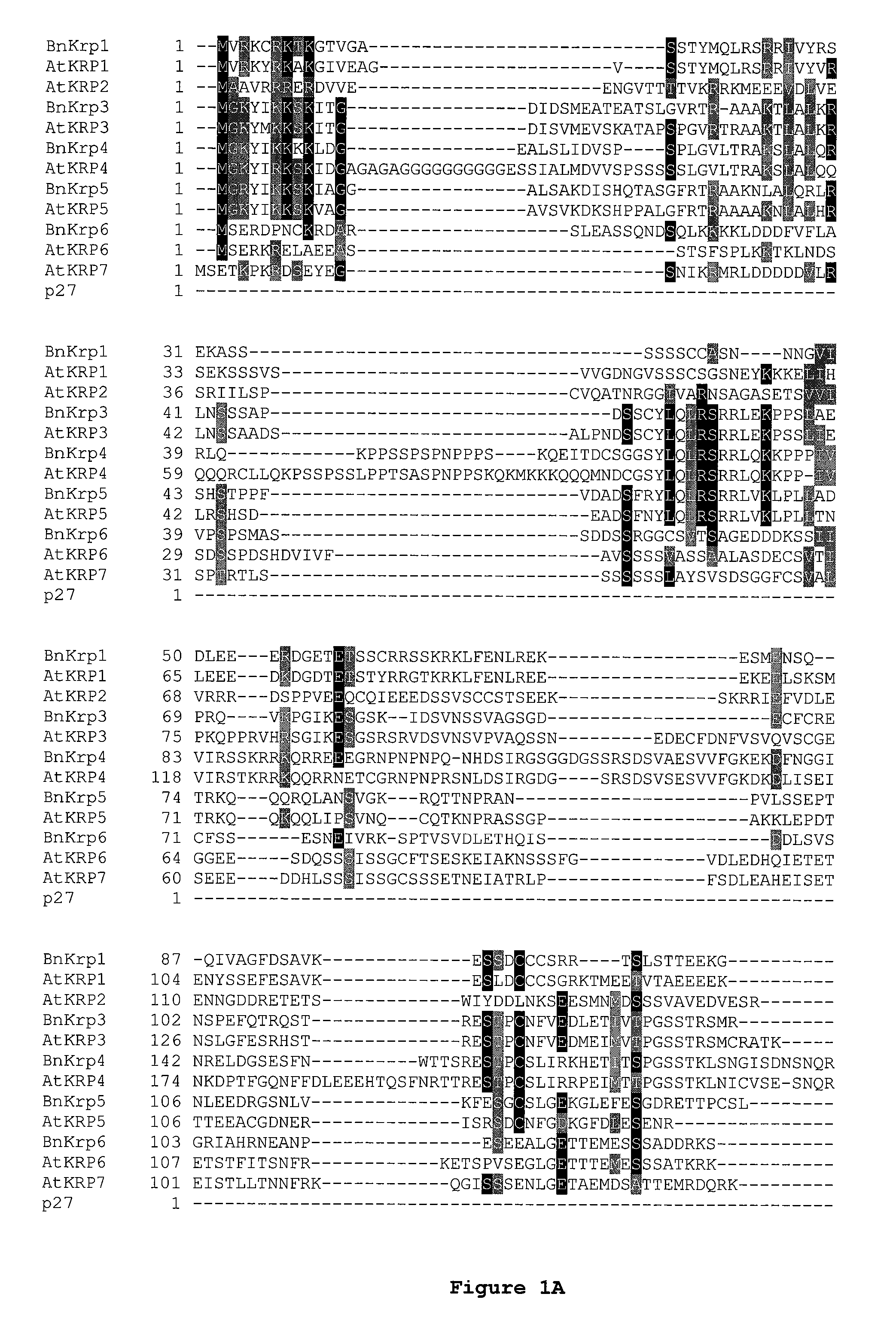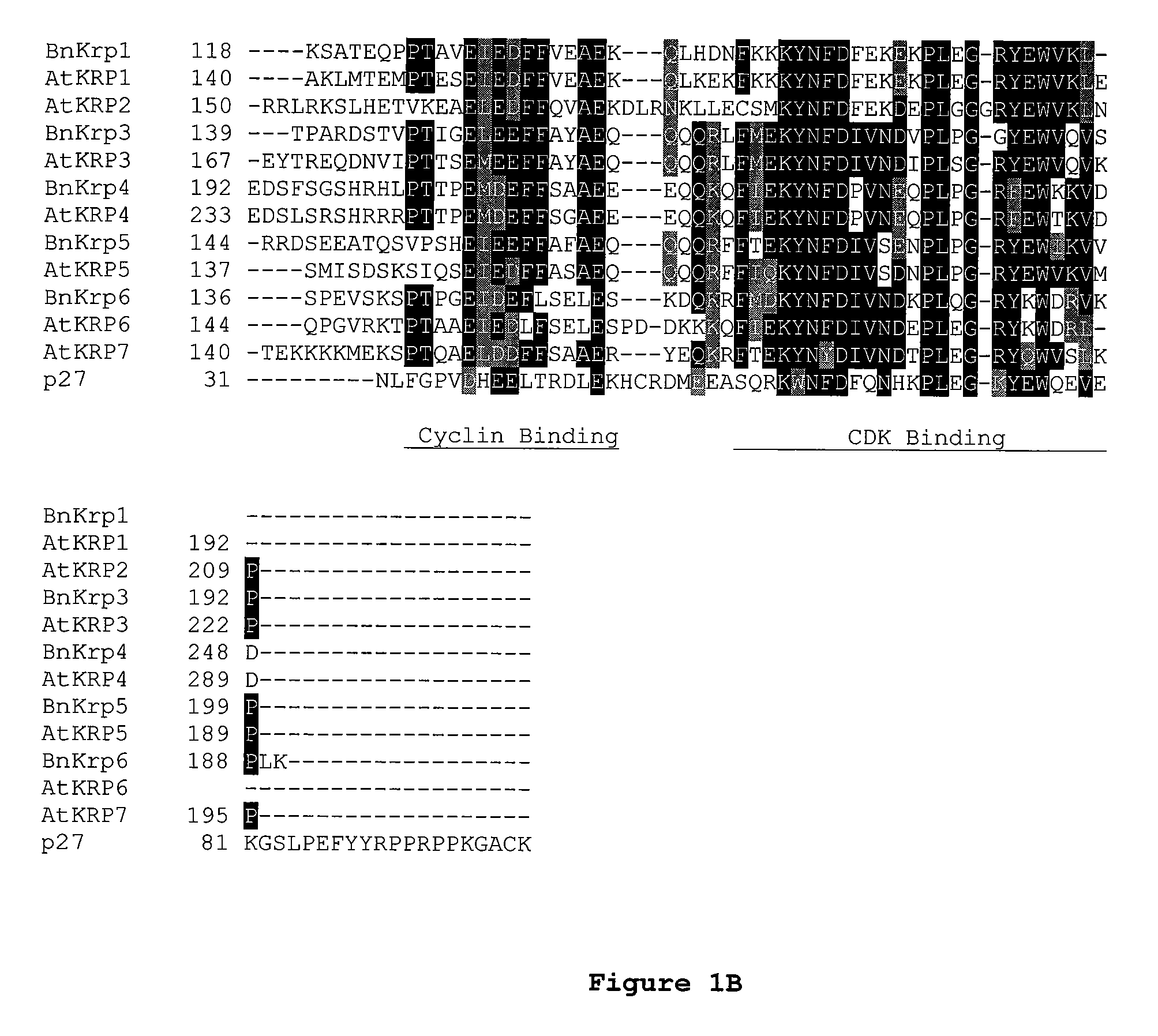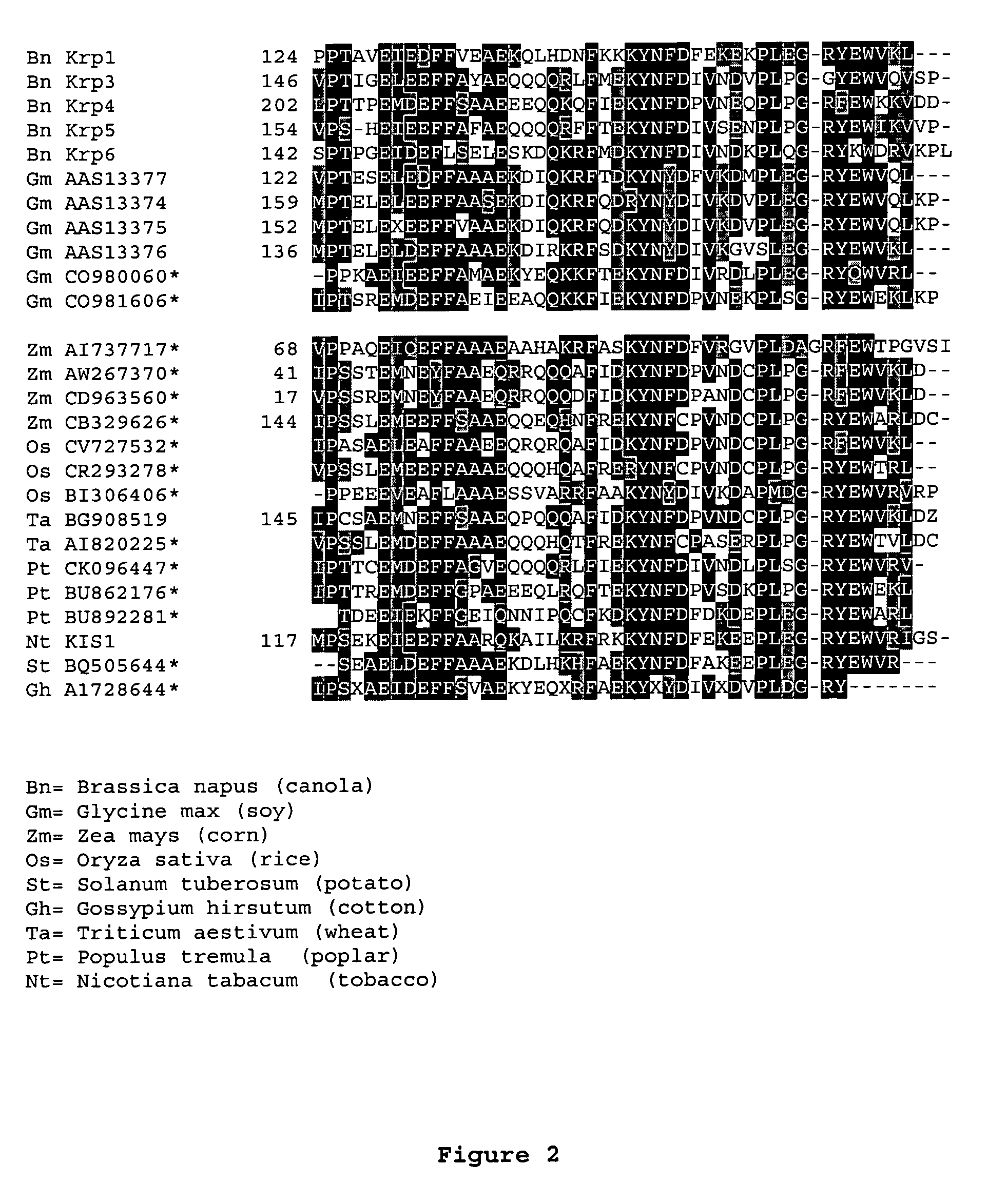Dominant negative mutant KRP protein protection of active cyclin-CDK complex inhibition by wild-type KRP
a technology of active cyclin-cdk complex and mutant krp, which is applied in the direction of peptide sources, transferases, enzymology, etc., can solve the problems of increased animal size and/or tumor development, yield penalty, and accelerated cell cycle, so as to increase cell proliferation, accelerate progression, and increase plant vigor
- Summary
- Abstract
- Description
- Claims
- Application Information
AI Technical Summary
Benefits of technology
Problems solved by technology
Method used
Image
Examples
example 1
Production / Purification of an Active Cyclin:CDK Complex and the Production / Purification of Krp Molecules
Insect Cells and Media
[0173]The baculovirus expression system is a versatile eukaryotic system for heterologous gene expression. This system provides correct protein folding, disulfide bond formation and other important post-translational modifications. All methods were taken from the Baculovirus expression vector system: Procedures and methods manual. (BD Biosciences, Pharmingen, San Diego, Calif. 6th ed.). Sf9 insect cells were grown at 27° C. in TNM-FH insect cell media (BD Biosciences) for the reported studies. It should be noted that alternative media are well known to the skilled artisan and are also useful. Similarly, alternative insect cell lines such as Sf21 and High Five™ cells will also work for virus production and protein production.
Western Blot and Immunoprecipitations.
[0174]The recombinant protein expressed in insect cells was monitored by Western blot. Protein extr...
example 2
Amino Acid Homology Between Mammalian p27KIP1 and Plant KRPs
[0213]The CIP1 / KIP1 family of CKIs utilizes two contact regions to bind and inhibit the kinase complex. Based on this mode of binding and inhibition, altering the binding capabilities of one of these two regions could potentially result in a dominant negative protein that can still interact with the complex (via the intact domain), no longer inhibit the kinase activity and interfere with the wild-type CKI from inhibiting an active cyclin / CDK complex. For example, if the cyclin binding region were rendered non-functional, the mutant protein would still interact through the CDK binding region with the kinase complex via the intact domain. Similarly, if the CDK binding region were rendered non-functional, the mutant protein would still interact through the cyclin binding region with the kinase complex.
[0214]The AtKrp family of CKI's share homology throughout the entire protein with the highest homology lying in the most C-term...
example 3
Protein Structure of Mammalian p27KIP1 in Complex with Cyclin / CDK Used to Identify Keys Amino Acids that Contact CDK that are Conserved in Plant KRPs
[0219]To facilitate the design of the dominant negative Krp molecules that would ultimately interfere with the wild-type KRP function the previously published structure of mammalian p27KIP1 in complex with cyclin A-CDK2 kinase complex was used (see Russo et al., Nature 382:325-331, 1996). The structural information along with the alignment information were combined to identify key amino acids that when changed to alanine or other amino acid residues resulted in a protein with dominant negative characteristics. These dominant characteristics are as follows: 1) mutant Krp bind to cyclin / CDK complexes, 2) mutant protein do not substantially inhibit the formation of cyclin / CDK complex even at high concentrations and 3) mutant protein should compete substantially with the wild-type KRP molecule for binding to cyclin / CDK complexes. In vivo, m...
PUM
| Property | Measurement | Unit |
|---|---|---|
| pH | aaaaa | aaaaa |
| bed volume | aaaaa | aaaaa |
| pH | aaaaa | aaaaa |
Abstract
Description
Claims
Application Information
 Login to View More
Login to View More - R&D
- Intellectual Property
- Life Sciences
- Materials
- Tech Scout
- Unparalleled Data Quality
- Higher Quality Content
- 60% Fewer Hallucinations
Browse by: Latest US Patents, China's latest patents, Technical Efficacy Thesaurus, Application Domain, Technology Topic, Popular Technical Reports.
© 2025 PatSnap. All rights reserved.Legal|Privacy policy|Modern Slavery Act Transparency Statement|Sitemap|About US| Contact US: help@patsnap.com



